Microsoft Surface Book 2 (15-inch)
Indisputably better than the first, the Surface Book 2 remains as one of our favorite 2-in-1 laptops you can buy today. However, it’s not as lonely in our rankings as it once was. As Microsoft eagerly makes a continued effort to best Apple’s MacBook Pro, there’s now a model with a 15-inch screen in addition to the usual 13.5-inch variant. It aims to be the end-all and be-all laptop that suitably replaces all of your other devices, but does it succeed?
Unfortunately, the answer to that rhetorical question isn’t as obvious as it would seem. Sure, the Surface Book 2 makes a dent within the confines of the laptop space, but does it serve as an equally refined tablet? And, what’s more, do its specs compete on an even playing field with some of the more powerful desktops you can buy or build? Those are but some of the questions we’ve asked ourselves in the making of this full-length review of the Surface Book 2.
Luckily, for most people, the Surface Book 2 can realistically replace your other hardware. It’s more powerful and portable than ever, so to speak. But it’s also an expensive proposition, one that’s bound to be deemed inaccessible by the vast majority of the population. So before we get started with its design and features, let’s take a look at the Surface Book 2’s cost.
Price and availability
Surprising no one, the 15-inch Surface Book 2 is a hugely expensive laptop, with the configuration we’ve tested coming in at a crazy $3,299 (about £2,503, AU$4,341). Naturally, this is the highest end that the Surface Book 2 gets, with the entry-level model starting at a still-steep $2,499 (about £1,847, AU$3,288) – its only difference being a much smaller 256GB solid-state drive (SSD) inside.
Sadly, the 15-inch version of the Surface Book 2 won’t be available in the UK or Australia until 2018, we’re told.
The 13.5-inch version starts at $1,499 (£1,499, AU$2,199) for a 7th-generation Kaby Lake Intel Core i5 processor with integrated graphics and 256GB of storage – getting the Nvidia GTX 1050 graphics and 8th-generation Intel Core i7 CPU will cost you $1,999 (£1,999, AU$2,999), with each storage option from there costing another 500 bills in all currencies.
The 13.5-inch version of the Surface Book 2 is different enough from the 15-inch version that we felt it warranted a separate review, explaining our deliberate choice to write one. Likewise, there’s a vast distinction in the financial barrier of entry as well.
Keep in mind that none of these prices include Microsoft’s $99 (£99, AU$139) Surface Pen. And yes, we will keep calling Microsoft out on this until it begins bundling this nigh-crucial accessory in with the price of its Surface devices again.
For comparison’s sake, Apple’s 15-inch MacBook Pro with Touch Bar starts at $2,399 (£2,349, AU$3,499) for a 7th-generation Intel Core i7 processor an AMD Radeon Pro 555 graphics chip with 2GB of VRAM, 16GB of memory and a 256GB SSD – all powering a 2,880 x 1,800-pixel 15.4-inch display at 220 pixels per inch as well as an OLED Touch Bar.
For another 100 bucks, you’re getting a more up-to-date processor and far stronger graphics powering a sharper display with touch control that detaches and acts as a tablet. Not accounting for personal taste, it’s tough to dispute that the Surface Book 2 is the better value here.
The recently announced Dell XPS 15 2-in-1, on the other hand, makes the Surface Book 2 seem overpriced. Starting at $1,299, it comes with a super-sized 15.6-inch 1080p display, an Intel Core i5-8305G processor, 8GB of DDR4 RAM and a 128GB SSD. You’ll be able to upgrade the screen to 4K, the RAM to 16GB and the SSD space up to 1TB as well, leading us to wonder if we’ll see a price cut to the Surface Book 2 in the near future as a result.
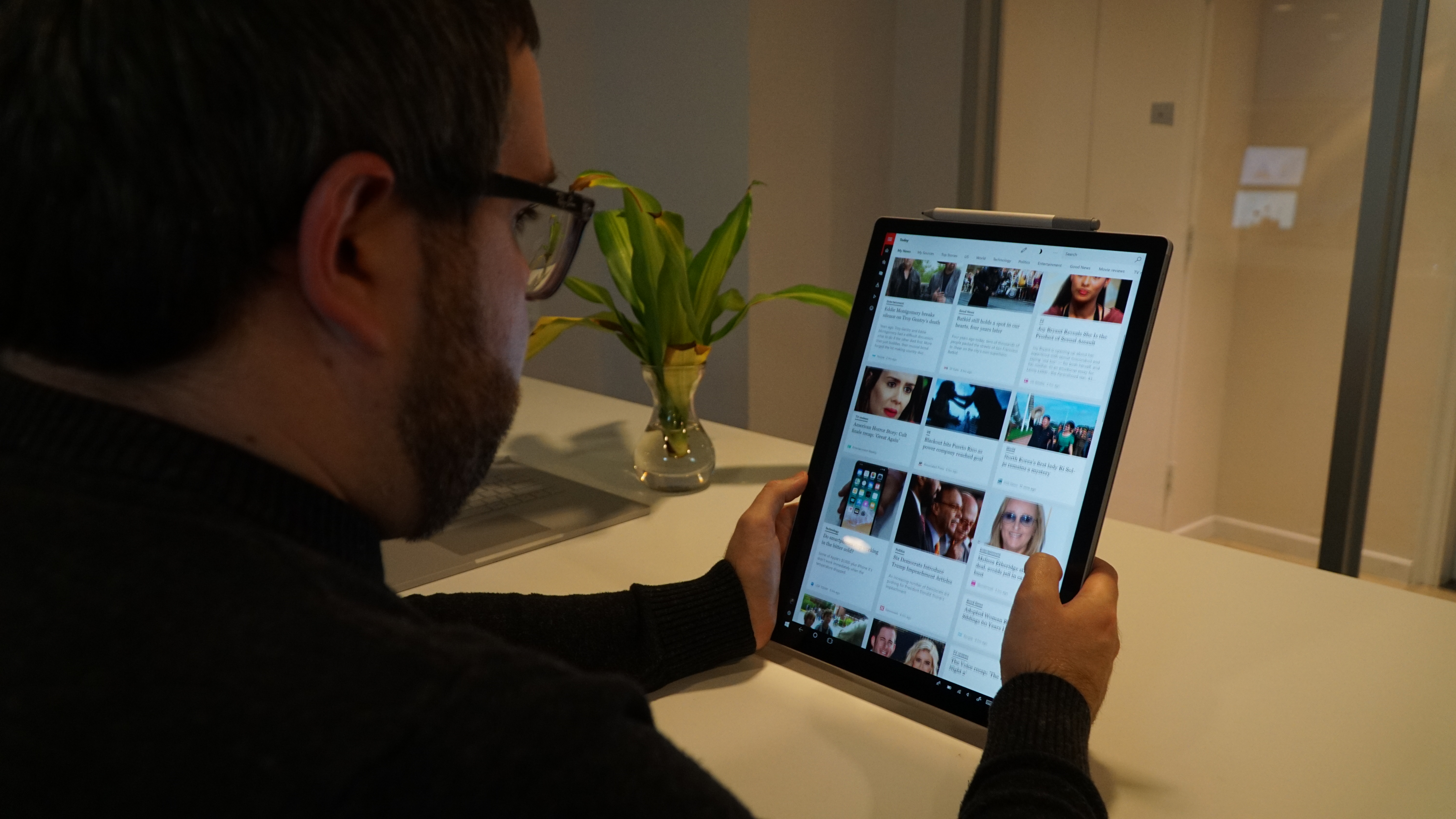
Design
It’s no understatement to say that, from a look and feel perspective, Microsoft simply took the original Surface Book and blew it up in all dimensions to make the Surface Book 2 a 15-inch device in all its brushed aluminum splendor. While Microsoft clearly put a lot of effort in vastly increasing the laptop’s power profile and screen technology, this is, in many ways, simply a bigger Surface Book.
That’s not necessarily a bad thing, mind you. Microsoft has clearly taken what it had learned from the Surface Book i7 and went to town with it, crafting a power-packed 15-inch laptop that’s actually rather light. Better yet, when detached from its base, this is the lightest-feeling 15-inch tablet we’ve ever tested – to the point that it feels deceptively small in our hands.
That said, the Surface Book 2’s fulcrum hinge does make for a laptop that’s a little more unwieldy to cram into a backpack than most, and it’s now more pronounced than ever. Worse still, Microsoft didn’t do much design-wise with the extra space that 15 inches affords you.
For instance, the glass trackpad isn’t quite as wide or deep as, say, the 15-inch MacBook Pro’s when it very well could have been, given the space. Also, the lack of up-firing stereo speakers in the base is a glaring omission, with ample space on all three remaining sides of the keyboard for extra audio chambers.
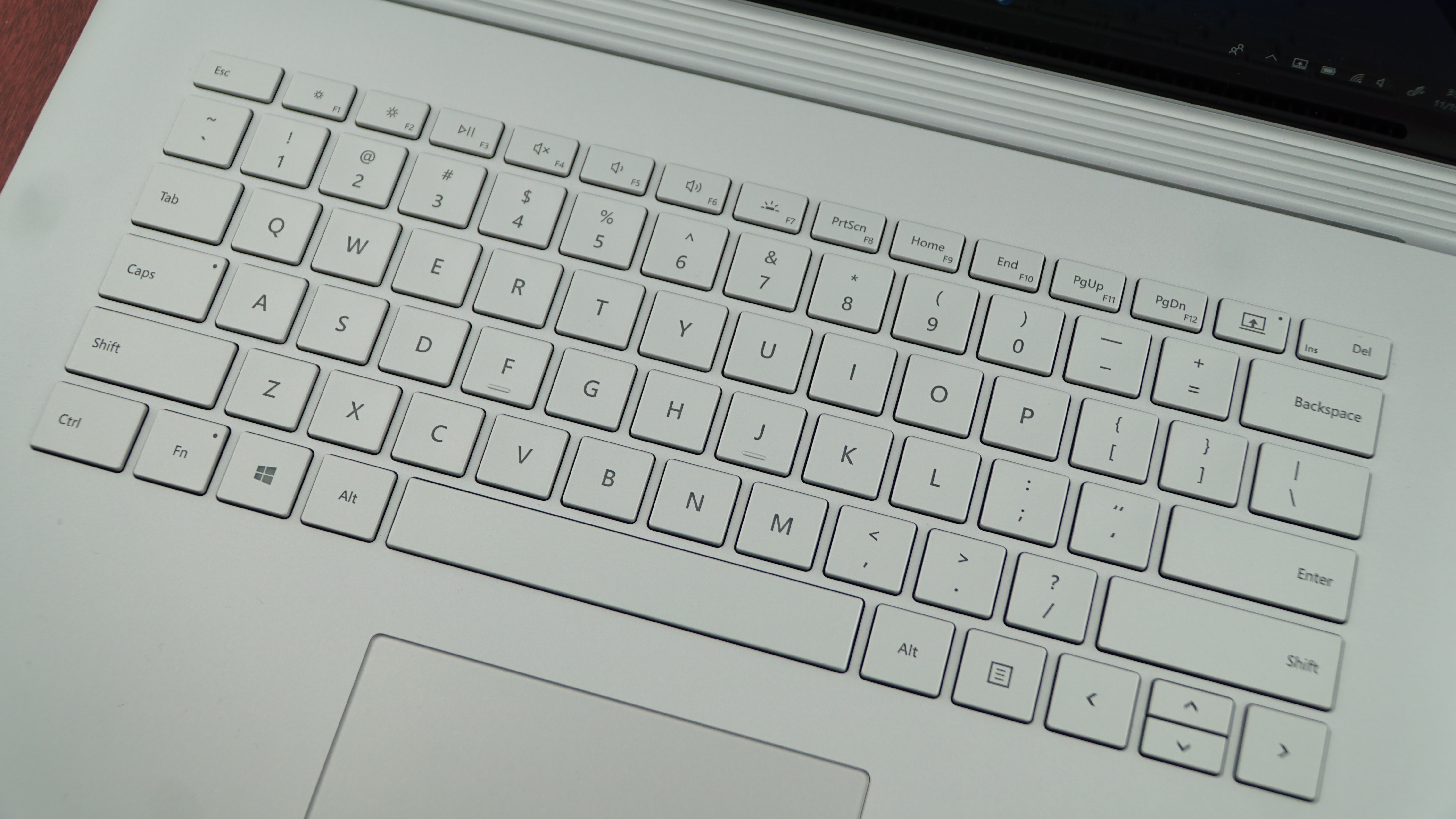
Instead, we’re stuck with rather tinny, albeit front-firing, speakers on the tablet portion of the device. The bigger keyboard base should offer us bigger everything, frankly, not just bigger graphics. Worse yet is that the audio jack is still in the same weird, upper-right-edge position it’s always been, dangling over our hands and distracting us while typing.
Speaking of which, typing on the Surface Book 2 is a pleasure, with a brightly backlit keyboard that demonstrates deep-enough travel and punchy feedback. However, in our view, the feedback could stand to be a touch more forceful – but that could be down to personal taste.
All told, we like the Surface Book 2 (15-inch) design quite a bit – even its 1080p webcam and rear camera should impress at the next meeting or in your Instagram feed. But, we can’t ignore the missed opportunities to refine the product that much further and make the experience that much bigger when it comes to how it feels, looks and sounds.
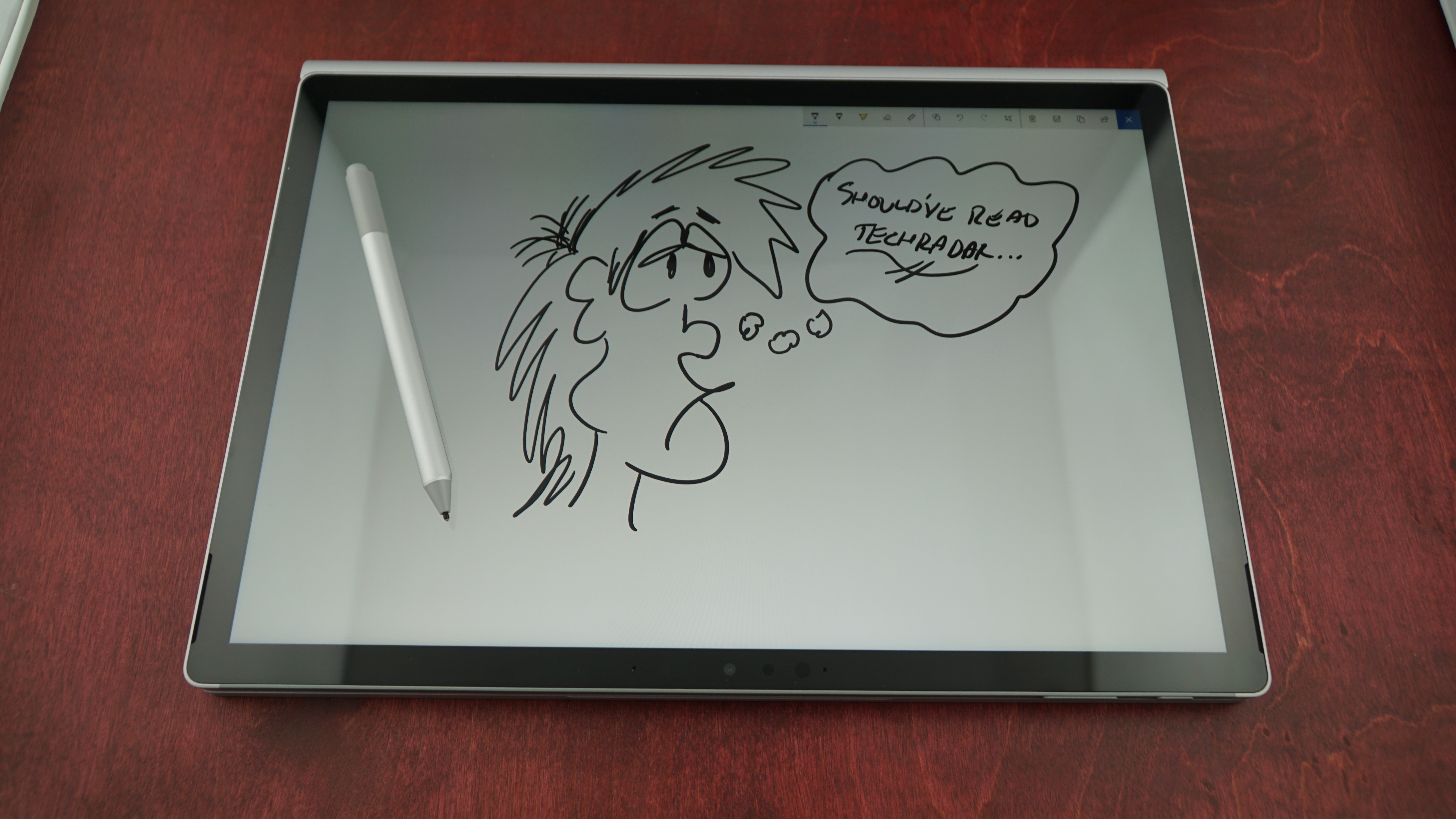
Display and Surface Pen
Of course, we’re just as in love with the Surface Book 2 (15-inch) display as we were with the previous two models. Text looks crisp on the screen as do photos and video, even if the 3:2 aspect ratio makes for some awfully thick black bars during the latter.
The display’s resolution is nigh-unmatched short of 4K laptops, and Apple’s MacBook displays can’t hold a candle to it pixel for pixel. While Apple’s P3 color gamut might tower over Microsoft’s panel in the eyes of art and media pros, we don’t see much difference between the two in regards to color reproduction.
We’re told that Microsoft devoted quite a bit of effort to improving the touch response in its latest PixelSense display for the Surface Book 2, and it shows in testing. If any lag between drawing on the screen with the Surface Pen and its appearance on the screen was there before, it’s certainly imperceptible now.
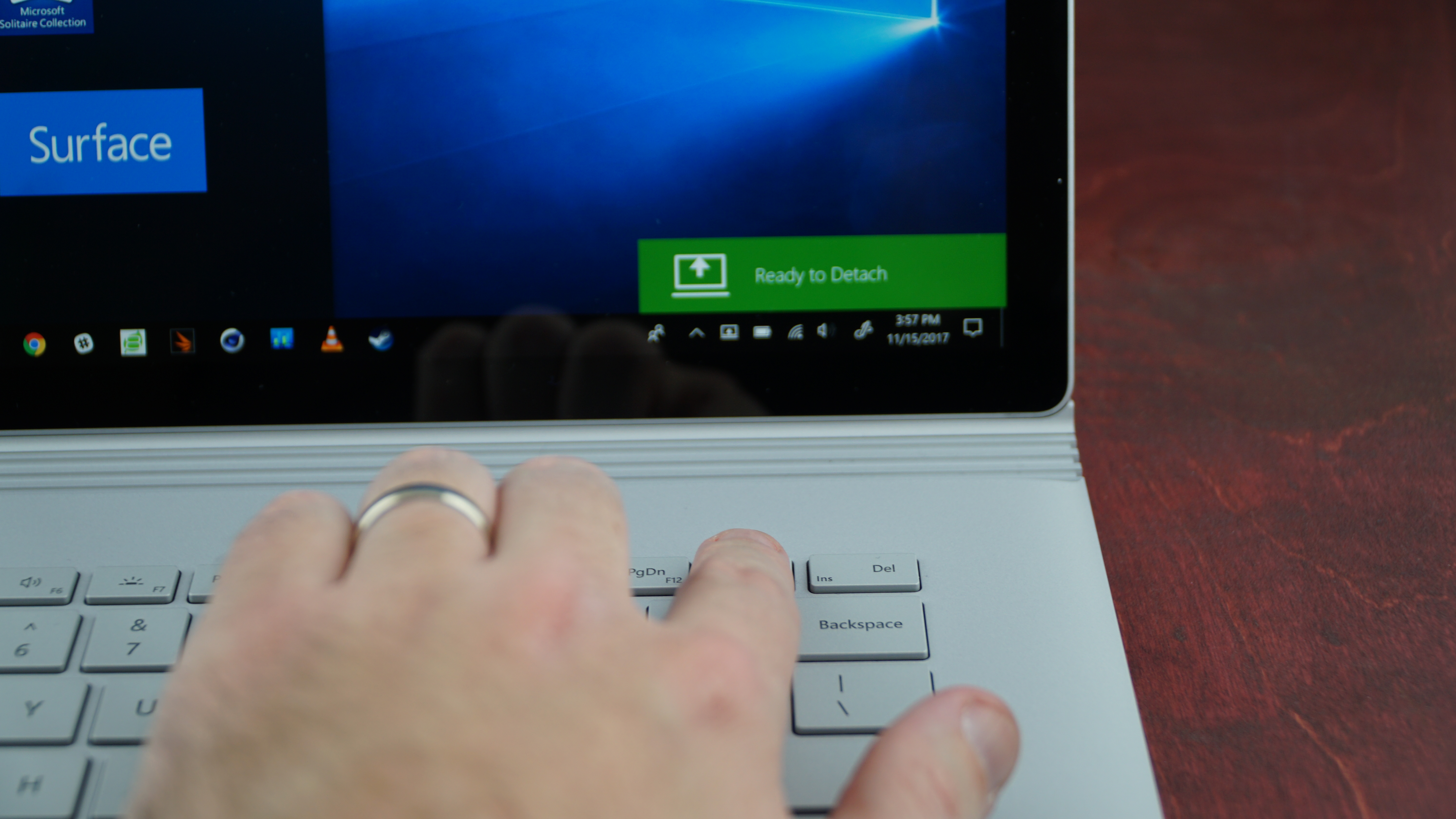
In fact, if you scribble on a sticky note and run the Surface Pen off of the note window – you’ll see traces of ink appear on whatever is there, though it will almost immediately disappear. That’s a special processor rendering the ink before even Windows 10 does, we’re told, which should speak to the absence of latency in the touchscreen.
Plus, attaching and detaching the display from the keyboard base is as speedy as you’d expect from a wildly expensive computing device. Whether it’s going into tablet mode or back into a laptop, it’s less than a second before you’re successfully tapping or typing away.
At any rate, the Surface Book 2 screen goes to show that Microsoft can craft displays worthy of comparison against the technology world’s greatest in basically every metric.
To say that the Surface Book 2 is powerful would be selling Microsoft’s latest laptop short. Simply put, this is the strongest 2-in-1 laptop we’ve ever tested, ready to go toe-to-toe with not only every hybrid laptop on the market but a wide range of gaming laptops, too.
As you can see through the benchmarks, the Nvidia GTX 1060 graphics inside the laptop’s base are more than enough to handle the very latest games at 1080p resolution. (We saw more than playable frame rates in both of these benchmarked games at native resolution, too.) Those aren’t words we generally put to paper regarding Surface devices, much less any 2-in-1 laptops.
Nor should gaming be the reason you purchase a Surface Book 2. Frankly, you could get the same experience for far cheaper and spend that extra cash on games or even an external GPU box plus a graphics card. Though, few laptops will keep as cool as this one under pressure, thanks mostly to its split design keeping the CPU and GPU apart.
That said, Microsoft included the Xbox Wireless radio – which allows it to communicate with Xbox One controllers natively – for a reason. That is, for a cross section of designers or media pros and gamers that would be served well by a device that can do it all.
At this point, it should go without saying that the Surface Book 2 (15-inch) handles our normal, workload with aplomb, barely seeing its quad-core CPU and 16GB of RAM break a sweat. You’d have to try hard to cripple this laptop, is what we’re saying.
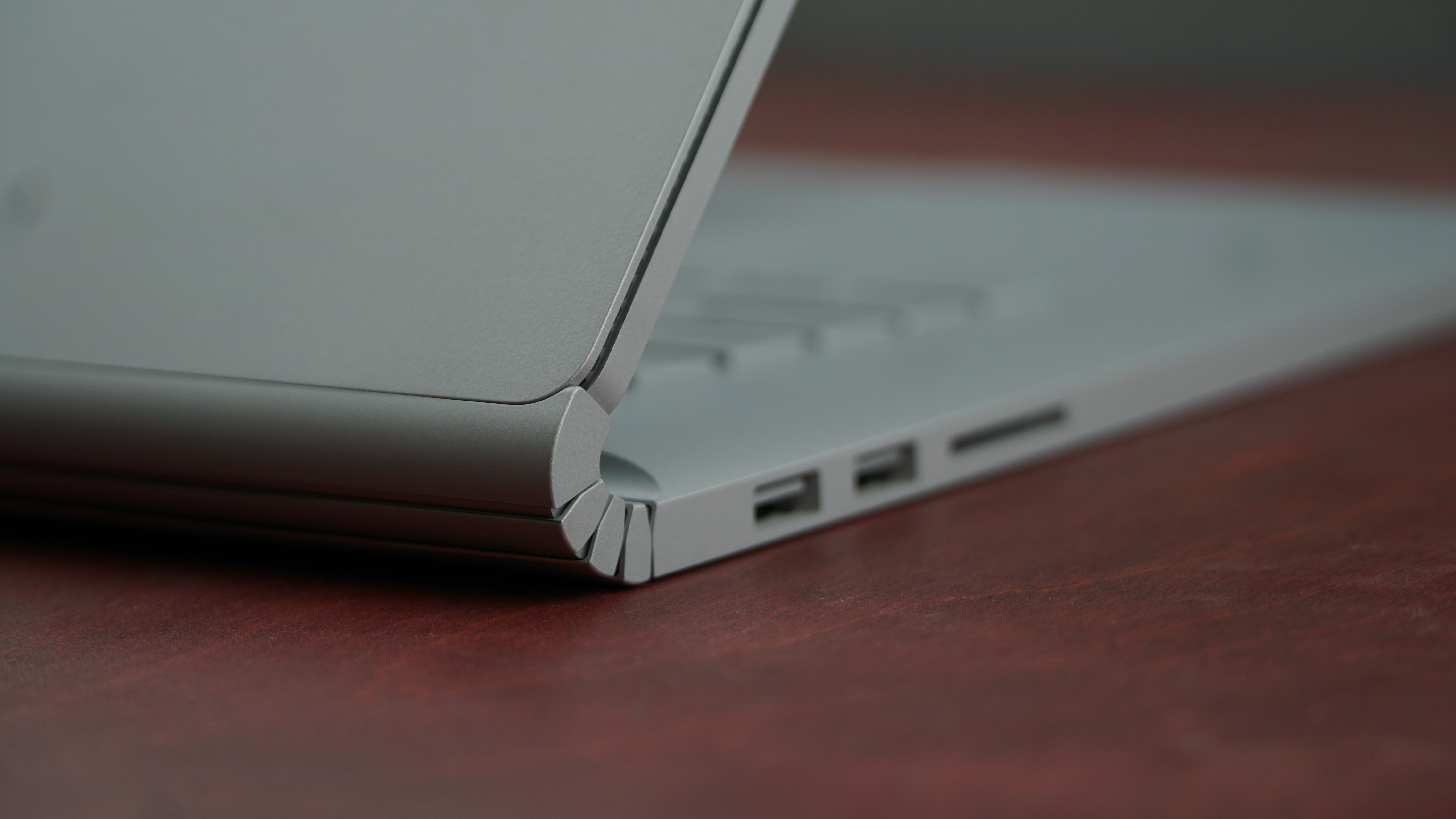
Battery life
Considering that point, the fact that this laptop lasted longer in PCMark 8’s battery test than just about any 2-in-1 laptop we’ve tested to date is just downright impressive. A score of 7 hours and 39 minutes in this historically punishing test is unheard of in the TechRadar offices, especially considering the previous model lasted for less than half that long.
This figure is testament to the sheer amount of battery afforded to the Surface Book 2 (15-inch) by its larger size and the nature of its design. Microsoft promises up to 17 hours of battery life from the 15-inch Surface Book 2 over local video playback.
We’ll be putting this to the test as soon as possible, as we weren’t able to test the Surface Book 2 battery in this capacity in the time allotted for this review. Stay tuned for an update in the coming days regarding just this.
In the meantime, know that the Surface Book 2 is already shaping up to be one of the longest-lasting laptops we’ve ever tested.
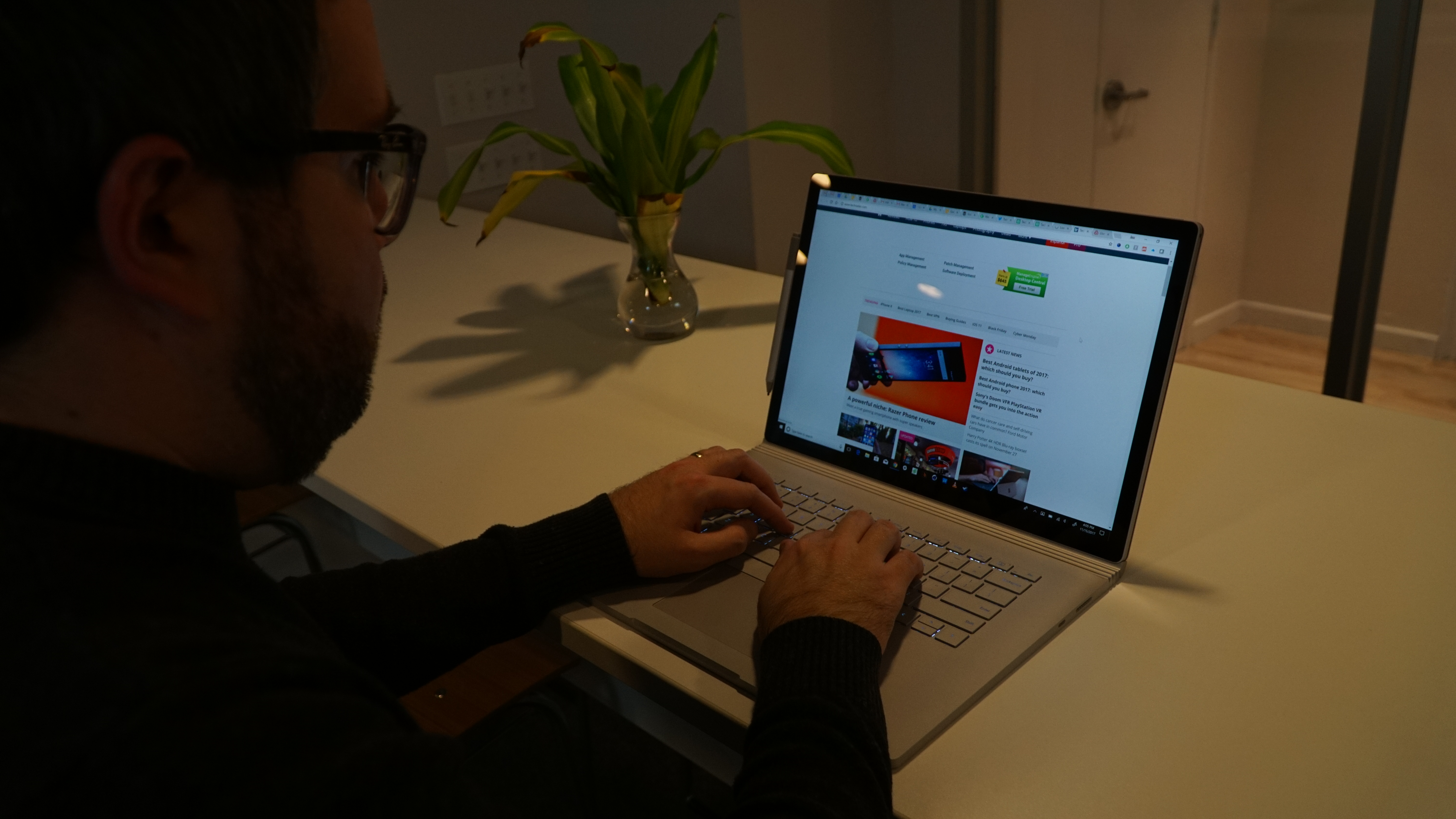
We liked
From its immense power to its impressively long battery life, we’re very impressed by the Surface Book 2. The display is a delight to look at much less handle in tablet mode, not to mention touch and stylus response is just stellar. Being able to game on this device is just a cherry on the top.
We disliked
For all of its major wins, we wish Microsoft did more with the 15 inches of space in regards to the Surface Book 2 design. We would have liked to have seen larger speakers in the base of the laptop and a larger trackpad given the increased frame. Also, we’ll never stop being miffed by the fact that Microsoft doesn’t include the Surface Pen in the price of the device.
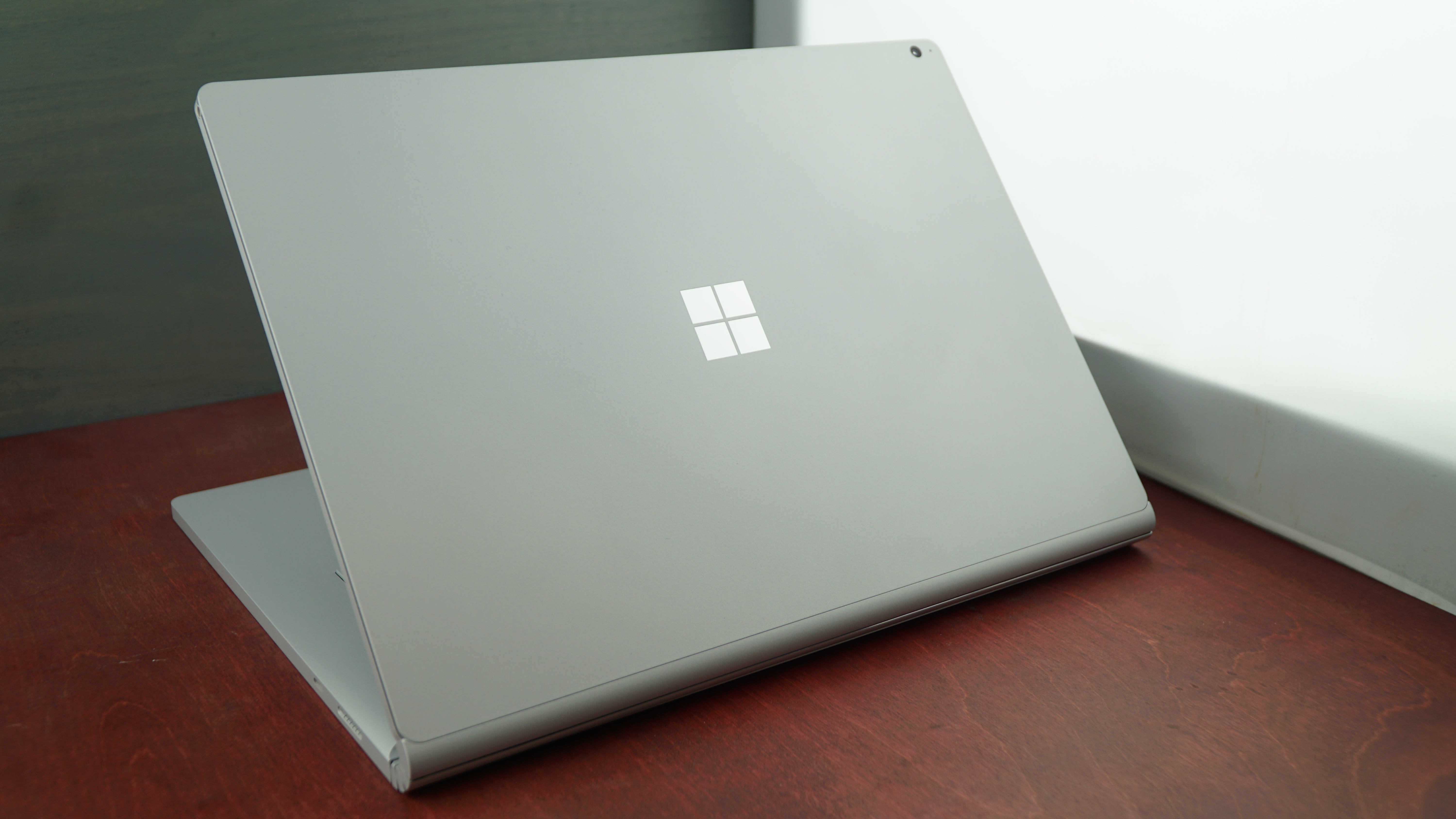
Final verdict
All in all, the 15-inch Surface Book 2 is the most powerful and versatile 2-in-1 laptop we’ve ever tested, but it’s not a perfect device. There are a few missed opportunities in Microsoft simply taking the original Surface Book and making it bigger, at least chassis design-wise.
That said, we recognize the hard work and engineering that went into crafting this device. The proof is in its nigh-unparalleled performance and longevity, not to mention its good looks and tactile feel when held in the hand as either a laptop or a tablet.
Of course, you’ll pay dearly for all of the aforementioned accolades, which we’d say is well worth it for the creative pros (or anyone who’s rich enough) out there that can swing it. The price is steep for the best 2-in-1 laptop to date, but remember you’re getting the cream of the crop in 2-in-1 laptop design by the folks that defined the category.
0 comments:
Post a Comment